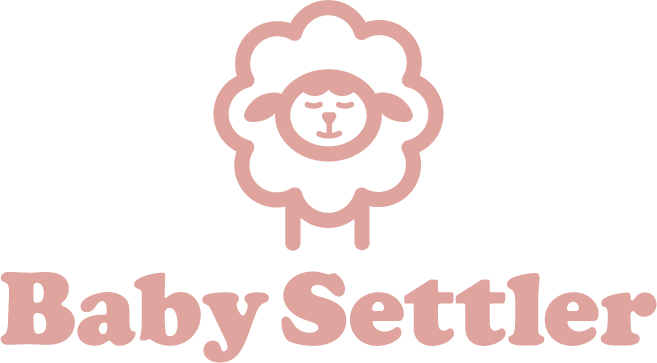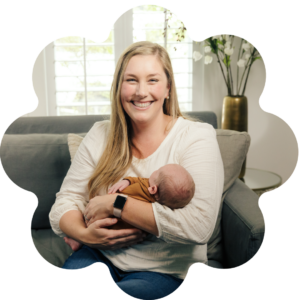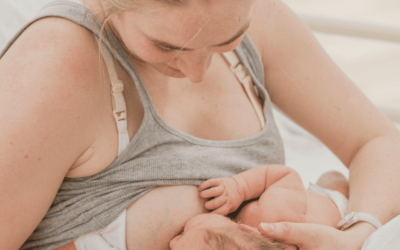Do you want to introduce bottles into your baby’s feeding routine? There are a few baby bottle best practices to make the transition a smooth one.
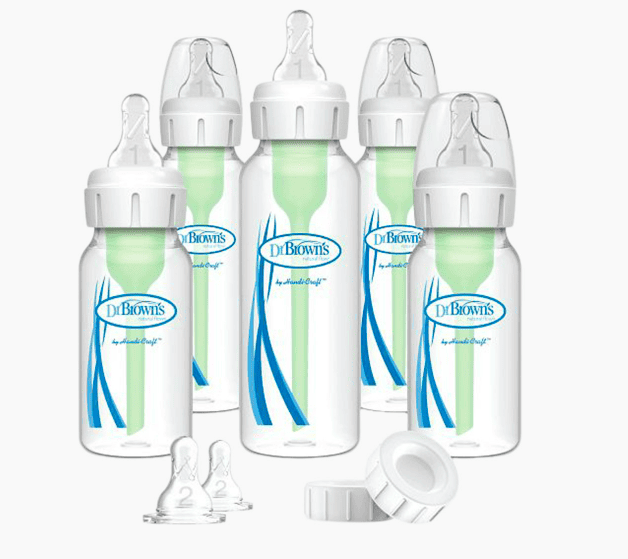
Choosing The Right Baby Bottle
Dr. Brown’s is my all-time favorite bottle. It is the bottle that I used for all four of my kids. But not just for me personally; I have seen it be extremely helpful for all the babies that I have worked with over my whole career as a lactation consultant. This is not a paid promotion, though! So let’s talk about the bad things about this bottle first.
There are a lot of parts, which can be really frustrating for parents. I promise you the extra parts make a difference. With this bottle, you have the actual bottle, the cap, the nipple, the collar that goes on the nipple, and the venting system. “…an internal venting system that prevents air from coming in contact with the liquid. This helps prevent colic, spit-up, burping and gas,” says Dr. Brown’s Baby.
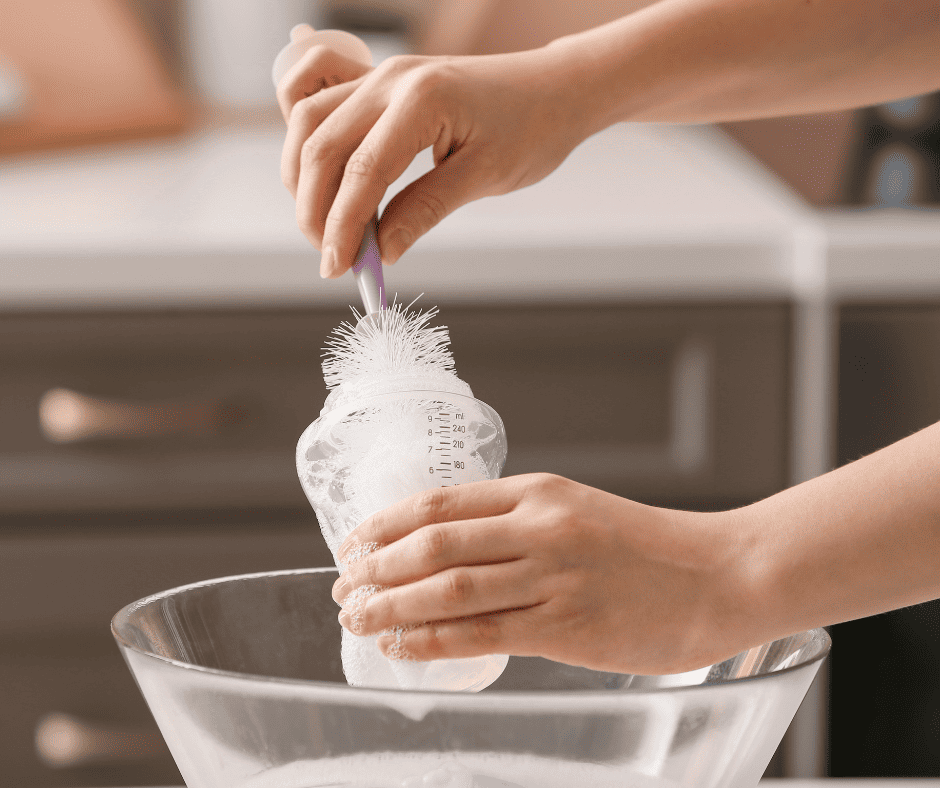
When you wash this bottle, you do have to take it apart to make sure it’s completely clean. “Bottles should be cleaned after every feeding. If your baby does not finish drinking a bottle within two hours, throw away the unfinished formula. Germs can grow quickly if breast milk or formula is added to a partially used bottle, or if a used bottle is only rinsed, rather than cleaned,” tells the CDC.
Infant Feeding Guide With A Dr. Brown’s Bottle
The bottle may say it can hold four ounces, but there is a problem with this. If you put four ounces of milk in a four-ounce bottle, it’s going to leak while you’re feeding your baby. To avoid this, you can reduce the amount of milk you’re putting in the bottle. If it says four ounces, put three ounces in. Another tip if your bottle is leaking: You’re supposed to close it just until it feels tight. You don’t want to really screw it down or really tighten it. If it’s too tight, it’s gonna leak.
Nipple Flow Rates
There are many different nipple flow rates for a newborn baby. Even if they are not born preterm, a newborn baby is more than likely going to use a Preemie flow nipple on a Dr. Brown’s bottle in that first month of life. They sell the Preemie flow with AccuFeeders, which only goes to like 60 milliliters or two ounces but, again, if you put two ounces in those it may leak. Taking this into account, you’re just going to buy a pack of Preemie flow nipples and use them with the bigger bottles.
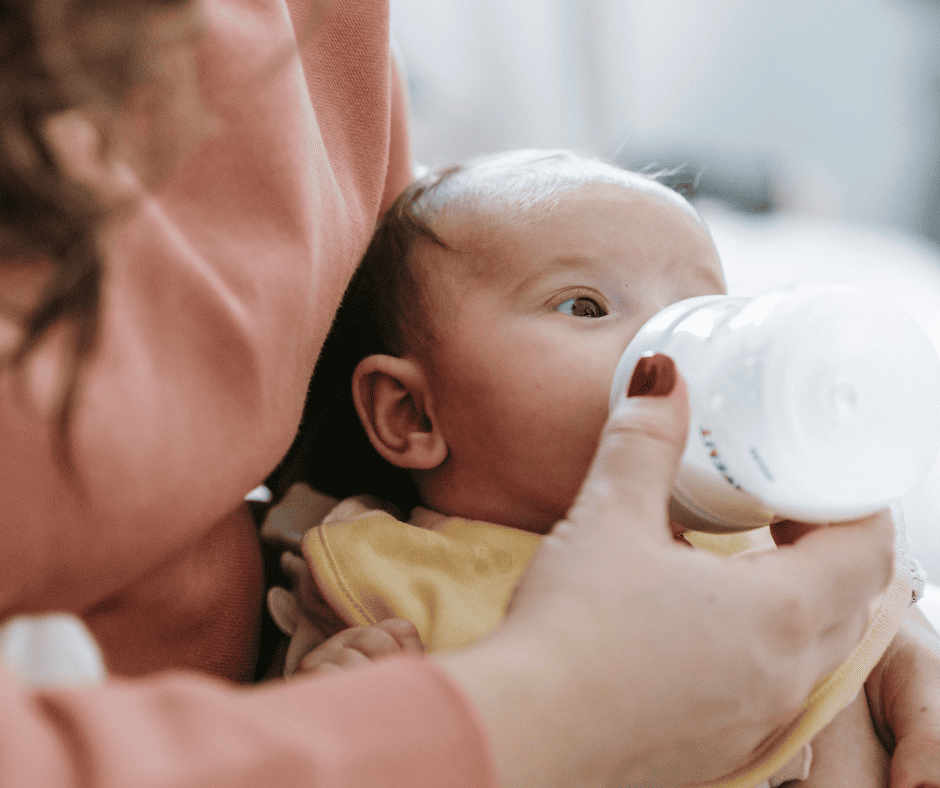
The standard nipple that comes with a four-ounce or eight-ounce Dr. Brown’s bottle is a level 1. Go ahead and put those away if you have a newborn – you’re not going to need those until three or four months.
You’re gonna start with the Preemie flow nipple and then depending on your flow (with bottle feeding it just depends on how organized and coordinated your baby is with a bottle) use a transition nipple somewhere between six to 12 weeks. Your baby is fine to stay on that nipple until they’re showing signs that they are ready for the level 1 nipple.
Signs that a flow rate is too fast include:
- They’re getting choked on the milk flow and spilling, “As milk flow increases, the rate of swallowing must increase, and therefore, the degree of respiratory interruption increases. If the infant is not able to swallow at a rate to match the flow rate, the infant may compensate by allowing the milk to drool out of the mouth,” explains the National Institutes of Health.
- Your baby is uncoordinated.
Signs that a flow rate is too slow:
- Your baby is older and out of the newborn phase.
- They used to be really efficient with the bottle, but now they’re taking a couple of ounces and then they’re done.
I’ve observed that with babies around seven to eight months old who have been using a level 1 nipple, they often reach a point where they seem to think, “This is taking too long”. Then you may need to transition to a level 2 nipple.
I haven’t known any babies who have advanced past a level 2 nipple throughout their whole feeding journey. So, I would really caution you if you feel like you need faster than a level 1 and your baby is less than three to four months old. Or, if you feel you need faster than a level 2 and your baby is over six months old. I would work with a feeding specialist near you because there could be something else going on.

Bottle Latching Techniques
The biggest thing I want you to take away from this is that the latch on this bottle is super important.
You want the whole bottle nipple in their mouth. Think about their lips touching the collar of the white part of the bottle. You can touch the nipple to their nose to get them to latch. If they’re chomping on the nipple, give the bottle a little twist. A lot of times, by doing a little bit of a twist, you’ll be able to get them to take the whole nipple in their mouth.
You can also do paced bottle feeding which, “…attempts to mimic the tempo and feel of breastfeeding while you bottle feed. It is useful to hold the baby upright and the bottle horizontally so the milk doesn’t flow too fast down the baby’s throat. Give the baby lots of pauses and check in with the baby frequently to see if it’s time for a break,” explains Parents.
You can also use a sideline position if your baby is in those first six weeks. An elevated side-lying position is also helpful.
“If your baby gets upset or doesn’t eat after about 10 minutes, take a break. It’s better to leave on a happy note than end with bad feelings about feedings,” suggests WebMD about introducing a bottle to your baby.
Breastfeeding Vs. Bottle Feeding
If you’re breastfeeding as well as bottle feeding, you really don’t want your baby to be chomping on the bottle!
If you have a baby that’s chompy, or you cannot get them to open their mouth enough for the bottle nipple, assess the bottle that you’re using.
Many of the heavily marketed baby bottles have a nipple that is so wide and round that it promotes this chomping. They’re chomping to get the milk out. Then you go to breastfeed your baby they’re going to be chomping at your breast as well.
If I have a baby that has a really tight mouth or a tight jaw, there are lots of other things that I’m going to recommend for that baby. But I’m also going to make sure that if we’re doing the bottle feeds we’re using a Dr. Brown’s bottle to promote a wide latch. This is to help them use their tongue in the correct way instead of chomping and using their cheeks and their lips for sucking.
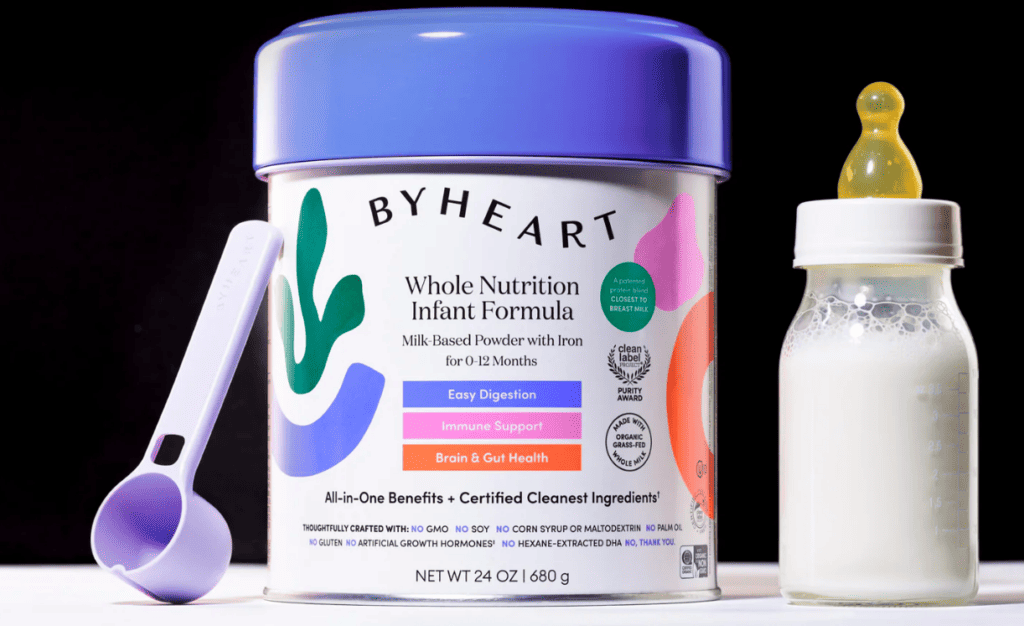
Transitioning To Formula
If, along with introducing a bottle to your baby, you want to add formula to their diet, I recommend ByHeart Formula because of:
- Easier digestion
- Less spit up
- Softer poops
- More efficient weight gain
- Enhanced nutrient absorption
- Longer stretches between nighttime feeds at four months old
Plus, this formula supports brain and eye development as well as immune and gut health.
They ran the largest clinical trial by a new infant formula brand in 25 years which included 311 babies over six months. They are also the only new brand to add a comparison to breast milk. All this allows them to understand their closeness to nature’s most super superfood and all of its magical benefits.
To introduce formula, you can start with combo feeding, “Supplementing with formula means exactly that — adding formula to your breastfeeding routine, whether you also nurse or pump breast milk to serve in bottles,” explains What To Expect.
You can start by mixing formula with your breast milk and then start switching out breast milk feeding sessions with formula.
Mastering newborn baby feeding goes a long way to getting your little one to sleep better and for longer! To help new mamas, we’ve put a few parenting tips in a free guide. Get three tips that will help your newborn sleep longer here.
